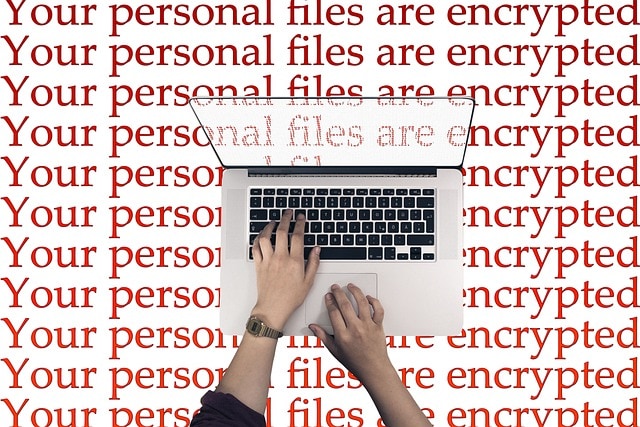In today’s digital age, online assessment security has become a critical concern for educators. As online learning and remote testing continue to gain popularity, it is imperative for educators to implement best practices that uphold the integrity and reliability of assessments.
This article aims to provide educators with a comprehensive overview of online assessment security best practices. It will explore secure online assessment tools that can prevent cheating and fraud, as well as strategies to protect sensitive data during online testing.
By adopting these best practices, educators can maintain the credibility and validity of their assessments while ensuring a fair and equitable testing environment for all students.

This article seeks to empower educators with the necessary knowledge and tools to effectively navigate the challenges of online assessment security.
Selecting Reliable Online Assessment Tools
Selecting reliable online assessment tools is crucial for educators to ensure the integrity and accuracy of their students’ evaluations. In the digital age, where online learning has become the norm, it is essential to prioritize online assessment security to prevent cheating and fraud.
When choosing online assessment tools, educators should consider features that enhance digital exam integrity and secure e-assessments. One important factor to consider is the ability to prevent cheating. Look for tools that offer features like lockdown browsers, which restrict students from accessing external websites or resources during the assessment.
Data protection is another critical aspect to consider when selecting online assessment tools. Educators must ensure that the tool they choose complies with data privacy regulations and provides secure data storage. Look for tools that offer encryption and secure servers to protect students’ information.
Moreover, educators should assess the reliability and accuracy of the assessment tools themselves. Look for tools that have been extensively tested and proven to provide accurate results. Reading reviews and seeking recommendations from other educators can also be helpful in determining the reliability of a tool.
Implementing Proctoring Measures
To ensure the integrity of online assessments, educators can implement proctoring measures to monitor students during exams. Proctoring refers to the process of supervising students during exams to prevent cheating and maintain the authenticity of the assessment. There are various proctoring measures that educators can implement to enhance the security of online assessments.
One common proctoring measure is live proctoring, where a proctor monitors students in real-time through video conferencing software. The proctor can observe the students’ behavior, facial expressions, and surroundings to detect any suspicious activities. Live proctoring also allows for immediate intervention if cheating is suspected.
Another proctoring measure is automated proctoring, which utilizes AI-powered algorithms to analyze students’ behavior during exams. This includes monitoring eye movements, keyboard inputs, and browser activities to detect any signs of cheating. Automated proctoring can provide real-time alerts to educators if suspicious behavior is detected.
Additionally, educators can implement remote proctoring solutions that utilize advanced technologies such as facial recognition, ID verification, and browser lockdown. These measures ensure that the person taking the exam is indeed the registered student and prevent unauthorized access to external resources.
Promoting Academic Integrity

Promoting academic integrity is crucial in online assessments.
Educators can implement cheating prevention strategies such as using secure online assessment tools, setting clear expectations, and enforcing strict guidelines.
Additionally, promoting ethical behavior through education, fostering a culture of honesty, and emphasizing the importance of integrity can help students understand the significance of maintaining academic honesty in online assessments.
Cheating Prevention Strategies
Implementing robust cheating prevention strategies is crucial to maintaining academic integrity in online assessments.
With the increasing popularity of online learning, educators must be prepared to address the challenges associated with preventing cheating and promoting honesty in virtual classrooms.
One effective strategy is to use secure online assessment tools that offer features such as randomized question order, time limits, and remote proctoring.
Randomizing questions ensures that each student receives a unique set of questions, making it difficult for them to share answers.
Time limits can also discourage students from seeking external help or using unauthorized resources.
Remote proctoring tools use advanced technologies like facial recognition and screen monitoring to detect and deter cheating behaviors.
Promoting Ethical Behavior
One key aspect of maintaining academic integrity in online assessments is fostering ethical behavior among students. To promote ethical behavior, educators can implement the following strategies:
- Clearly communicate expectations: Educators should clearly outline the standards of academic integrity and the consequences of unethical behavior in online assessments.
- Provide comprehensive instructions: Clear and detailed instructions can help students understand the assessment requirements and minimize the temptation to engage in dishonest practices.
- Use plagiarism detection tools: Utilizing plagiarism detection software can discourage students from submitting plagiarized content and help identify any instances of academic dishonesty.
- Encourage a culture of honesty: Creating a classroom environment that values honesty and integrity can motivate students to uphold ethical behavior during online assessments.
Safeguarding Student Data

Ensuring the protection of student data is a top priority for educators involved in online assessments. With the increasing use of technology in education, it is important for educators to implement robust security measures to safeguard student data from unauthorized access or breaches.
One effective way to protect student data is by using secure online assessment tools that have built-in security features. These tools often employ encryption techniques to secure data transmission and storage, ensuring that student information remains confidential. Additionally, educators should regularly update these tools to take advantage of the latest security enhancements and patches.
To further enhance data protection, educators can implement measures to prevent cheating and fraud during online assessments. This includes using remote proctoring solutions that monitor students’ activities during exams, as well as implementing identity verification procedures to ensure that the person taking the assessment is indeed the registered student.
Educators should also be mindful of data privacy laws and regulations when collecting and storing student data. They should only collect and retain essential information and ensure that this data is securely stored and accessed only by authorized personnel. Regular data backups and secure storage systems can help mitigate the risk of data loss or unauthorized access.
By following these best practices, educators can confidently leverage online assessments while safeguarding student data and maintaining the integrity of the assessment process.
| Best Practices for Safeguarding Student Data |
|---|
| Use secure online assessment tools |
| Implement measures to prevent cheating and fraud |
| Adhere to data privacy laws and regulations |
| Regularly update security measures |
Ensuring Test Accessibility
When it comes to ensuring test accessibility, educators must consider accommodating diverse learning needs, such as providing alternative formats or extended time for students with disabilities.
Additionally, they should take into account assistive technology considerations, ensuring that students who rely on these tools can effectively access and complete the assessment.
Lastly, educators should strive to provide equal testing opportunities for all students, regardless of their individual circumstances, to promote fairness and inclusivity in the assessment process.
Accommodating Diverse Learning Needs
To ensure test accessibility for diverse learners, educators should implement a range of strategies. These strategies aim to provide equal opportunities for all students, regardless of their learning needs or abilities. Here are four key strategies to consider:
- Providing alternative formats: Offer assessments in different formats such as audio, braille, or large print to accommodate students with visual impairments or reading difficulties.
- Allowing extra time: Some students may require additional time to complete assessments due to learning disabilities or processing difficulties. Granting extra time can help ensure a fair and accurate assessment.
- Using assistive technology: Utilize assistive technologies like screen readers, text-to-speech software, or speech recognition tools to support students with disabilities in accessing and interacting with the assessment content.
- Offering flexible assessment options: Provide a variety of assessment methods, such as multiple-choice, open-ended questions, or project-based tasks, to cater to diverse learning styles and preferences.
Assistive Technology Considerations

Educators can enhance test accessibility by carefully considering the use of assistive technology to support students with diverse learning needs. Assistive technology refers to tools, devices, or software that help individuals with disabilities overcome barriers and accomplish tasks more effectively. By incorporating assistive technology into online assessments, educators can ensure that all students have equal opportunities to demonstrate their knowledge and skills.
To illustrate the range of assistive technology options available, the table below provides examples of commonly used tools and their corresponding functions:
| Assistive Technology | Function |
|---|---|
| Screen readers | Converts text to speech |
| Speech-to-text software | Transcribes spoken words |
| Text-to-speech software | Converts text to audio |
| Optical character recognition (OCR) software | Converts printed or handwritten text to digital text |
| Alternative keyboards | Offer different input methods, e.g., large keys or voice-controlled |
| Word prediction software | Suggests words or phrases as the user types |
Ensuring Equal Testing Opportunities
One important aspect of ensuring equal testing opportunities is implementing strategies to promote test accessibility. To achieve this, educators can consider the following best practices:
- Providing alternative formats: Offering tests in multiple formats, such as braille or audio, ensures that students with visual impairments or reading difficulties can access and complete the assessment.
- Allowing extra time: Some students may require additional time to read and process information. Granting extra time allows them to demonstrate their knowledge without feeling rushed.
- Accommodating assistive technology: Students who rely on assistive technology, such as screen readers or speech-to-text software, should be provided with the necessary tools to use during the assessment.
- Designing inclusive assessments: Creating assessments that consider the diverse needs of students, including those with disabilities, ensures that everyone has an equal opportunity to succeed.
Educating Students on Online Assessment Security
The article highlights the importance of educating students on online assessment security. As online assessments become more prevalent in educational settings, it is crucial for students to understand the potential risks and how to protect their personal information. Educating students on online assessment security helps to promote ethical behavior, prevent cheating and fraud, and ensure the integrity of the assessment process.
One key aspect of educating students on online assessment security is teaching them about secure online assessment tools. Students should be familiarized with the features and functionalities of these tools, such as secure login procedures, encrypted communications, and secure data storage. This knowledge will enable them to make informed decisions when participating in online assessments and protect their data from unauthorized access.
Additionally, students should be taught strategies to prevent cheating and fraud during online assessments. Educators can educate students on the importance of academic honesty and the consequences of cheating. They can also provide guidance on how to recognize and report suspicious activities or instances of cheating, such as sharing answers or using unauthorized resources.
Lastly, students should be made aware of the importance of data protection in online testing. They should understand the measures in place to safeguard their personal information and how it will be used. Educators can educate students on privacy policies, data encryption, and data retention practices to instill confidence in the security of online assessments.

Frequently Asked Questions
How Can Educators Ensure That the Online Assessment Tool They Select Is Reliable and Secure?
Educators can ensure the reliability and security of an online assessment tool by considering factors such as encryption, multi-factor authentication, secure user authentication, regular software updates, data privacy policies, and compliance with industry standards.
What Are Some Effective Proctoring Measures That Can Be Implemented to Prevent Cheating and Fraud in Online Assessments?
Effective proctoring measures that can be implemented to prevent cheating and fraud in online assessments include live proctoring, AI-based proctoring, identity verification, secure browser lockdown, and content randomization to ensure test integrity and fairness.
How Can Educators Promote Academic Integrity in an Online Assessment Environment?
Educators can promote academic integrity in an online assessment environment by implementing measures such as secure online assessment tools, proctoring techniques, and data protection. These practices help prevent cheating, fraud, and maintain the integrity of the assessment process.
What Steps Should Be Taken to Safeguard Student Data During Online Testing?
To safeguard student data during online testing, educators should implement secure assessment tools, educate students about the importance of data protection, and ensure compliance with privacy regulations. Regularly updating security measures is also crucial to prevent unauthorized access and maintain data integrity.
How Can Educators Ensure Test Accessibility for All Students, Including Those With Disabilities, in Online Assessments?
Educators can ensure test accessibility for all students, including those with disabilities, in online assessments by providing alternative formats, such as audio or Braille, using assistive technologies, and adhering to accessibility standards and guidelines.
Conclusion
In conclusion, implementing online assessment security best practices is essential for educators to protect the integrity of their assessments and ensure a fair testing environment for all students.
By selecting reliable assessment tools, educators can have confidence in the validity and reliability of the assessments they administer. This includes choosing platforms that have a track record of security and are regularly updated to address emerging threats.
Implementing proctoring measures is another important step in ensuring the security of online assessments. This may involve using remote proctoring tools that monitor students during the test to detect any suspicious behavior or use of unauthorized resources.
Promoting academic integrity is crucial in maintaining the fairness of online assessments. Educators can educate students about the importance of honesty and the consequences of cheating. They can also design assessments that encourage critical thinking and problem-solving skills, making it more difficult for students to simply look up answers.
Safeguarding student data is also a key consideration in online assessment security. Educators must ensure that any personal or sensitive information collected during the assessment process is stored securely and protected from unauthorized access.
Ensuring test accessibility is vital to creating a fair testing environment for all students. Educators should take into account the needs of students with disabilities or other accessibility requirements and provide appropriate accommodations during the assessment.
By following these practices, educators can create a secure and reliable online testing environment that upholds the credibility and validity of assessments.
